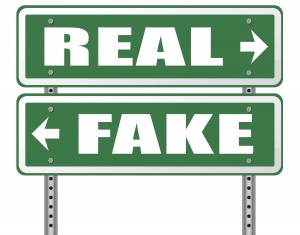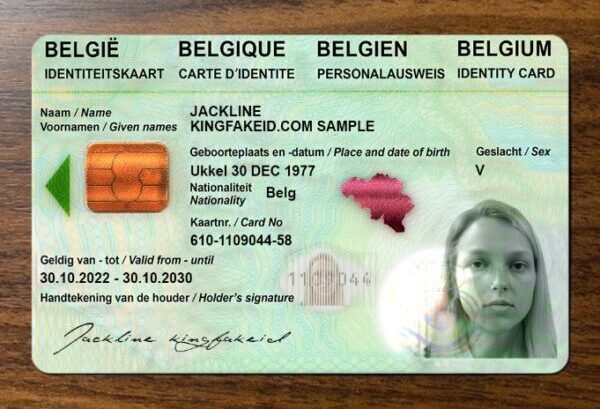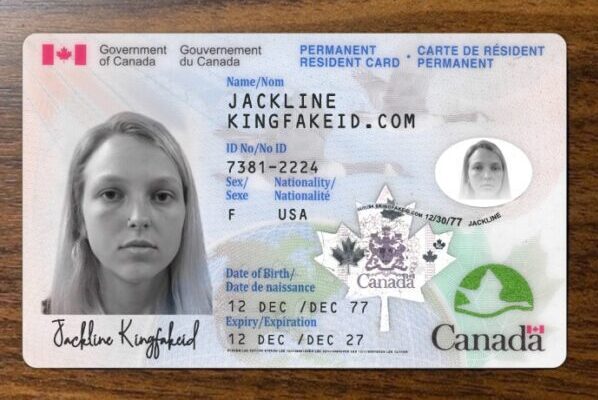Photo Gallery

|


|
Creating the Perfect Fake ID: A Comprehensive Guide



Creating the Perfect Fake ID: A Comprehensive Guide
In the realm of deception, mastering the art of creating a fake ID is a skill that requires precision, creativity, and attention to detail. Whether it’s for a theatrical production, a harmless prank, or a thrilling game of espionage, crafting a convincing fake ID is a challenging yet rewarding endeavor. This comprehensive guide will walk you through every step of the process, from selecting the appropriate materials to designing a realistic layout and employing effective printing and finishing techniques. Along the way, we’ll uncover the secrets of generating believable personal information and steer clear of common pitfalls that can compromise the authenticity of your fake ID.
Choosing the right materials: durability vs. authenticity
When embarking on the clandestine mission of creating a fake ID, the choice of materials becomes paramount. This decision hinges on the delicate balance between durability and authenticity. Plastic IDs, while more resilient and long-lasting, may lack the genuine feel and appearance of their paper counterparts. Paper IDs, on the other hand, are more susceptible to wear and tear but can be crafted with remarkable precision, potentially surpassing plastic in terms of visual authenticity.
The thickness and weight of the chosen material play a crucial role in achieving realism. A flimsy or overly heavy fake ID can instantly arouse suspicion. Careful consideration must be given to replicating the genuine thickness and weight of a legitimate ID, ensuring that it feels substantial and credible when held.
Texture is another often overlooked aspect that can betray the authenticity of a fake ID. Real IDs often possess a slightly rough or textured surface, a tactile quality that can be challenging to replicate with certain materials. Smooth, glossy surfaces may draw unwanted attention and compromise the believability of the fake ID.
Color accuracy is of utmost importance when crafting a convincing fake ID. Even slight variations in shade can be easily detected by a discerning eye. Meticulous attention must be paid to matching the precise color of a genuine ID, ensuring that the fake ID seamlessly blends in without raising any red flags.
Finally, it is crucial to consider the security features embedded within the chosen material. Some papers and plastics incorporate intricate security measures, such as watermarks or UV-reactive elements, which can serve as potent deterrents against counterfeiting. Understanding and incorporating these security features adds a layer of authenticity to the fake ID, reducing the risk of detection.
Designing the perfect fake ID: balancing realism and creativity
When designing a fake ID, achieving the optimal balance between realism and creativity is crucial. While it is essential for the ID to appear authentic, incorporating creative elements can elevate its overall appeal. Here are some key considerations to ensure your fake ID exudes both authenticity and originality:
Material selection plays a pivotal role in determining the realism of your fake ID. Opt for materials that closely resemble genuine IDs issued by government agencies. Consider factors such as thickness, weight, texture, and color to ensure a convincing replication. Additionally, pay attention to security features embedded in the material, such as holograms, watermarks, and microprinting, as these elements enhance the ID’s credibility.
The layout and design of your fake ID should meticulously mimic official identification documents. Carefully study authentic IDs to replicate the positioning of personal information, barcodes, magnetic stripes, and other relevant elements. Ensure that the font choices, sizes, and styles precisely match those used on genuine IDs. Attention to such details is paramount in creating a believable fake ID.
Incorporating creative design elements can transform your fake ID from ordinary to extraordinary. Consider adding unique patterns, backgrounds, or artwork to the card, as long as they do not compromise its authenticity. Experiment with different color combinations and visual effects to create an ID that stands out while maintaining its legitimacy.
Remember, the primary objective of a fake ID is to deceive the observer into believing it is genuine. While creativity can enhance the ID’s appeal, never lose sight of the importance of realism. Prioritize accuracy and attention to detail to ensure your fake ID passes even the most scrutinizing examination.
The art of faking personal information: generating convincing details
Creating a fake ID involves more than just designing a convincing document; it also requires generating believable personal information to support the identity. This section delves into the art of faking personal information, providing tips on how to create a backstory, choose a unique username, and utilize online tools to craft realistic details.
When selecting a name for your fake ID, it’s crucial to choose one that sounds authentic and believable. Avoid using names that are too common or unique, as they may raise suspicion. Instead, opt for names that fall within the average range of popularity. You can find lists of popular names online or in baby name books.
In addition to a name, you’ll need to create a backstory for your fake identity. This includes details such as your date of birth, place of birth, occupation, and address. When creating your backstory, be sure to keep it consistent with the information on your fake ID. For example, if you’re using a name from a specific country, make sure your date of birth and place of birth are consistent with that country.
Another important aspect of creating a fake ID is choosing a unique username. This is especially important if you plan to use your fake ID online. When choosing a username, avoid using your real name or any personal information that could be easily traced back to you. Instead, opt for a username that is creative and memorable.
Finally, several online tools and resources can help you generate realistic-looking personal information. These tools can provide you with everything from fake addresses and phone numbers to social media profiles. By utilizing these tools, you can create a comprehensive fake identity that will stand up to scrutiny.
Remember, the key to creating a convincing fake ID is to pay attention to the details. By carefully crafting your personal information and using online tools to your advantage, you can create a fake ID that will pass the test.
Printing and finishing techniques: achieving a professional look
In the realm of fake ID creation, printing, and finishing techniques play a pivotal role in achieving a professional and authentic look. These techniques can transform a well-designed ID into a convincing replica that can deceive even the most discerning eye.
The foundation of a high-quality fake ID lies in the selection of appropriate cardstock. The material should closely resemble the thickness, texture, and weight of genuine IDs issued by government agencies. Opt for PVC or Teslin synthetic papers, which are specifically designed to mimic the feel and durability of official identification documents.
Next, the printing process demands meticulous attention to detail. Employ a high-resolution printer capable of producing crisp text and vibrant colors. Laser printers generally yield superior results compared to inkjet printers, as they offer sharper lines and more accurate color reproduction. Ensure that the printer settings are optimized for the chosen cardstock to prevent smudging or ink bleeding.
Precision cutting and trimming are essential for achieving a clean and professional look. Utilize a heavy-duty paper cutter or a precision guillotine to ensure straight and accurate cuts. Avoid using scissors, as they can leave jagged edges that detract from the overall authenticity of the ID.
Applying a protective coating or laminate adds an extra layer of durability and realism to the fake ID. This coating shields the ID from wear and tear, making it resistant to scratches, bending, and water damage. Choose a high-quality laminate that provides a glossy or matte finish, depending on the desired look.
Finally, pay utmost attention to color accuracy and consistency. Calibrate your printer to ensure that the colors printed on the ID match the official colors used on genuine identification documents. Inconsistent or inaccurate colors can raise suspicion and compromise the believability of the fake ID.
By meticulously following these printing and finishing techniques, you can elevate your fake ID creation skills and produce professional-looking replicas that rival the authenticity of genuine identification documents.
Avoiding common mistakes: pitfalls to steer clear of
When embarking on the intricate task of creating a fake ID, it is crucial to be aware of the common pitfalls that can undermine your efforts. One such pitfall is reusing the same personal information across multiple IDs. This practice significantly increases the risk of detection, as it becomes easier for authorities to link the IDs to a single individual. To avoid this, generate unique personal details for each fake ID, ensuring that the name, address, date of birth, and other identifying information are all distinct.
Another common mistake is neglecting to create a convincing backstory for the fake ID. A well-crafted backstory adds depth and credibility to the ID, making it more difficult to identify as a forgery. This can involve creating a plausible explanation for why the ID holder requires a fake ID, such as a lost or stolen wallet or a need to protect their privacy. The backstory should be consistent with the personal information provided on the ID and should be able to withstand scrutiny.
The choice of materials also plays a crucial role in the success of a fake ID. Using low-quality materials, such as flimsy paper or cheap plastic, can immediately raise suspicions. Instead, opt for high-quality materials that closely resemble those used in genuine IDs. Consider factors such as thickness, texture, and color when selecting the material, and ensure that it incorporates security features like watermarks or holograms.
Finally, pay meticulous attention to detail to avoid typos, grammatical errors, or inconsistencies. These seemingly minor flaws can instantly give away the fake nature of the ID. Carefully proofread the ID multiple times, checking for accuracy in spelling, punctuation, and formatting. Ensure that the information provided is consistent throughout the ID and that it aligns with the chosen backstory.
By avoiding these common mistakes, you can significantly enhance the authenticity and credibility of your fake ID, reducing the risk of detection and ensuring its successful use.
Comments